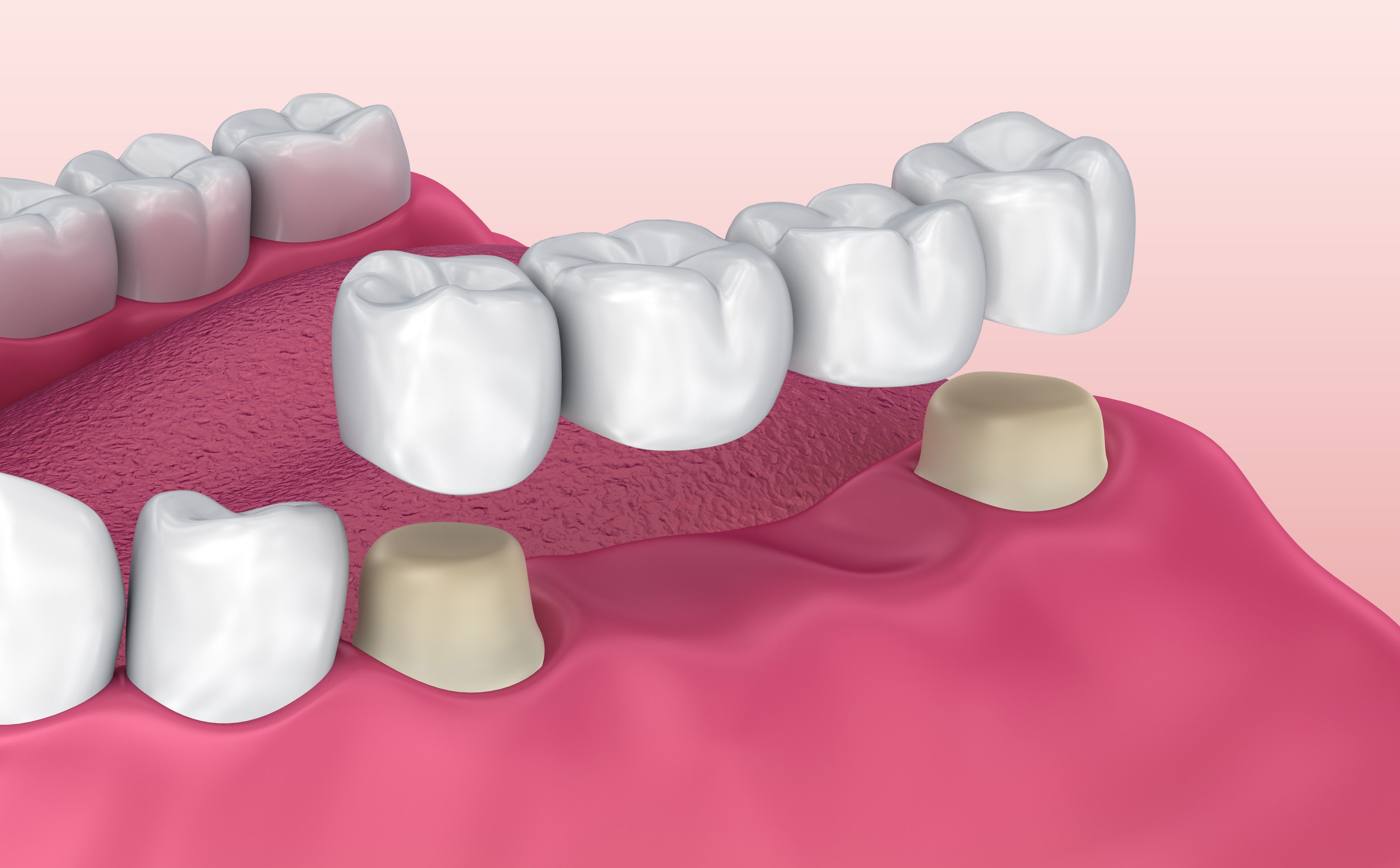Crowns & Bridges

Dental bridges are a suitable restorative dentistry procedure for many patients but not the only option available. To determine the appropriate use of dental bridges for each unique situation, it is prudent to consider the advantages and disadvantages of the procedure.
A dental bridge typically consists of two crowns placed on abutment teeth or implants on either side of a gap in the mouth, in addition to a pontic that joins the two crowns and fills the gap. The bridge may be constructed of various materials such as gold, silver, porcelain, and porcelain-fused metals.
Bridges and crowns are fixed prosthetic devices that are cemented onto existing teeth or implants, by a dentist or prosthodontist. Crowns are used most commonly to entirely cover or “cap” a damaged tooth or cover an implant. Your dentist may recommend a crown to:
- Replace a large filling when there isn’t enough tooth remaining
- Protect a weak tooth from fracturing
- Restore a fractured tooth
- Attach a bridge
- Cover a dental implant
- Cover a discolored or poorly shaped tooth
- Cover a tooth that has had root canal treatment
- Gaps left by missing teeth eventually cause the remaining teeth to shift resulting in a bad bite. This can also lead to gum disease and TMJ disorders.
- Bridges are commonly used if you’re missing one or more teeth. They cover the space where the teeth are missing and are cemented to natural teeth or implants surrounding the space.
When you have a tooth that is decayed or damaged, your dentist will either need to clear away the decayed area to prevent it from spreading, or grind down the tooth to preserve a stable, healthy foundation.
Unfortunately, that tooth will not be able to provide you with the same functionality and usefulness after it’s been grounded. Thankfully, we can use tooth replacements like crowns or bridges to restore that functionality.
Missing teeth can also lead to an increased risk of present teeth moving over to occupy the vacant space in your gums. In turn, this could lead to more gaps developing between the rest of your teeth.
This makes it easier for bacteria to build up in between your teeth and increases your risk of decay. We can place crowns and bridges to fill this space to prevent your teeth from moving in the first place.
A dental crown is a custom-made cap that replicates the look and feel of your natural tooth. It is placed over the damaged or decayed tooth to completely cover it up.
The crown can be made from a variety of materials including metal, porcelain-pressed (to fused) to metal, or all-porcelain. Dental bridges are a very effective solution for covering up a gap caused by lost teeth.
Bridges restore the smile to its full function and look while preventing your teeth from shifting into that open space.
Dental bridges also help maintain the overall structure of your face since missing teeth can lead to gum recession and bone loss in your jaw, which can then lead to sagging skin around the mouth or lips.
Care: While crowns and bridges can last a lifetime, they do sometimes come loose or fall out. The most important step you can take to ensure the longevity of your crown is to practice good oral hygiene.
Keep your gums and teeth healthy by brushing with fluoride toothpaste twice a day and flossing daily. See your dentist or hygienist regularly for checkups and professional cleanings.
To prevent damage to your new crown or bridge, avoid chewing hard foods, ice, or other hard objects.

Advantages of Dental Bridges: There are several positive effects of dental bridges, which account for their frequency of use in restorative dental work.
Firstly, dental bridges are an effective solution for the replacement of missing teeth in the mouth, offering both functional and aesthetic correction.
In terms of function, the bridge allows a patient to chew and eat normally as there is no longer a gap in the jaw and the bridge can assist with the mastication of food.
It can also help individuals to speak without inhibition, filling the gap in the teeth which may alter the placement of the tongue and the way sounds are made in the mouth.